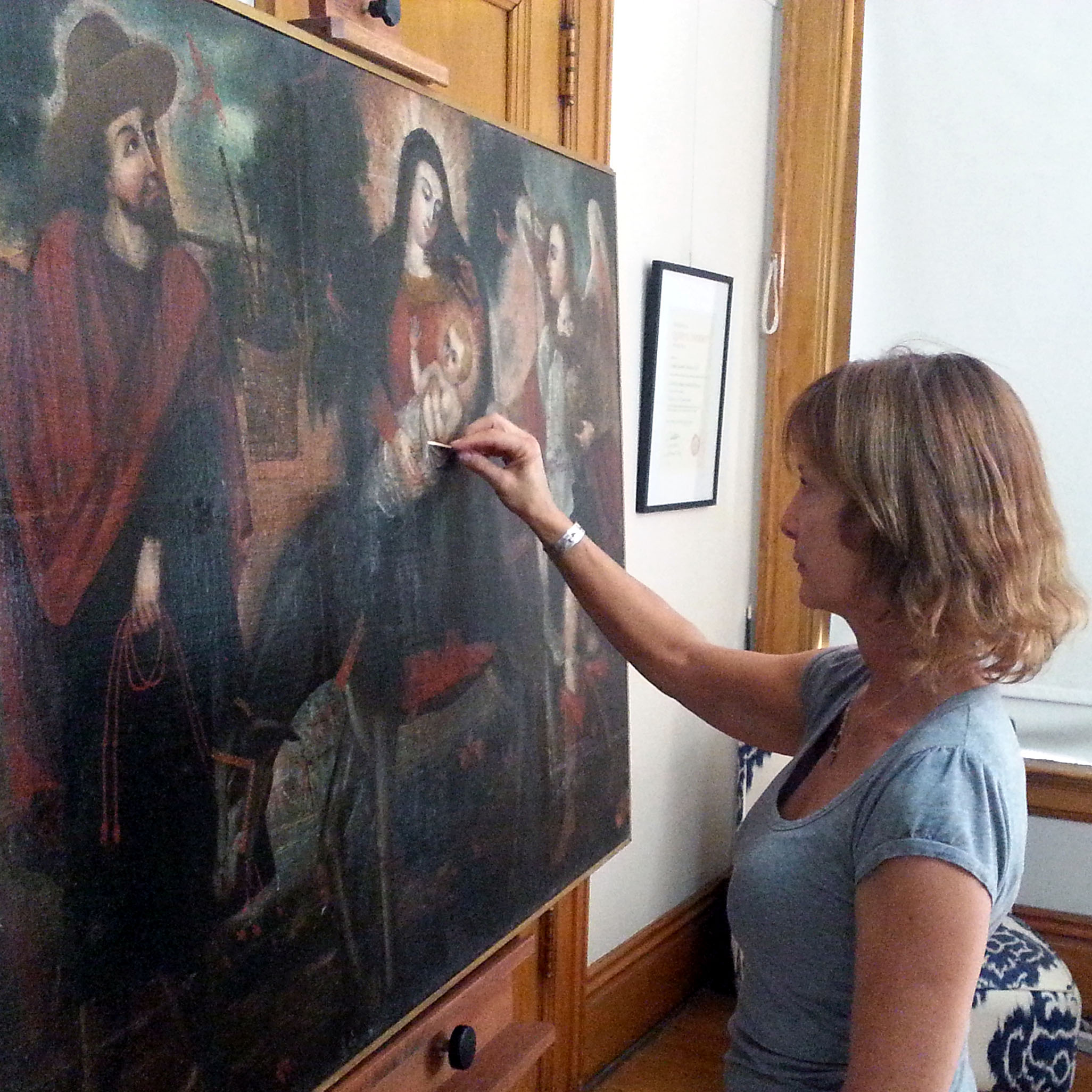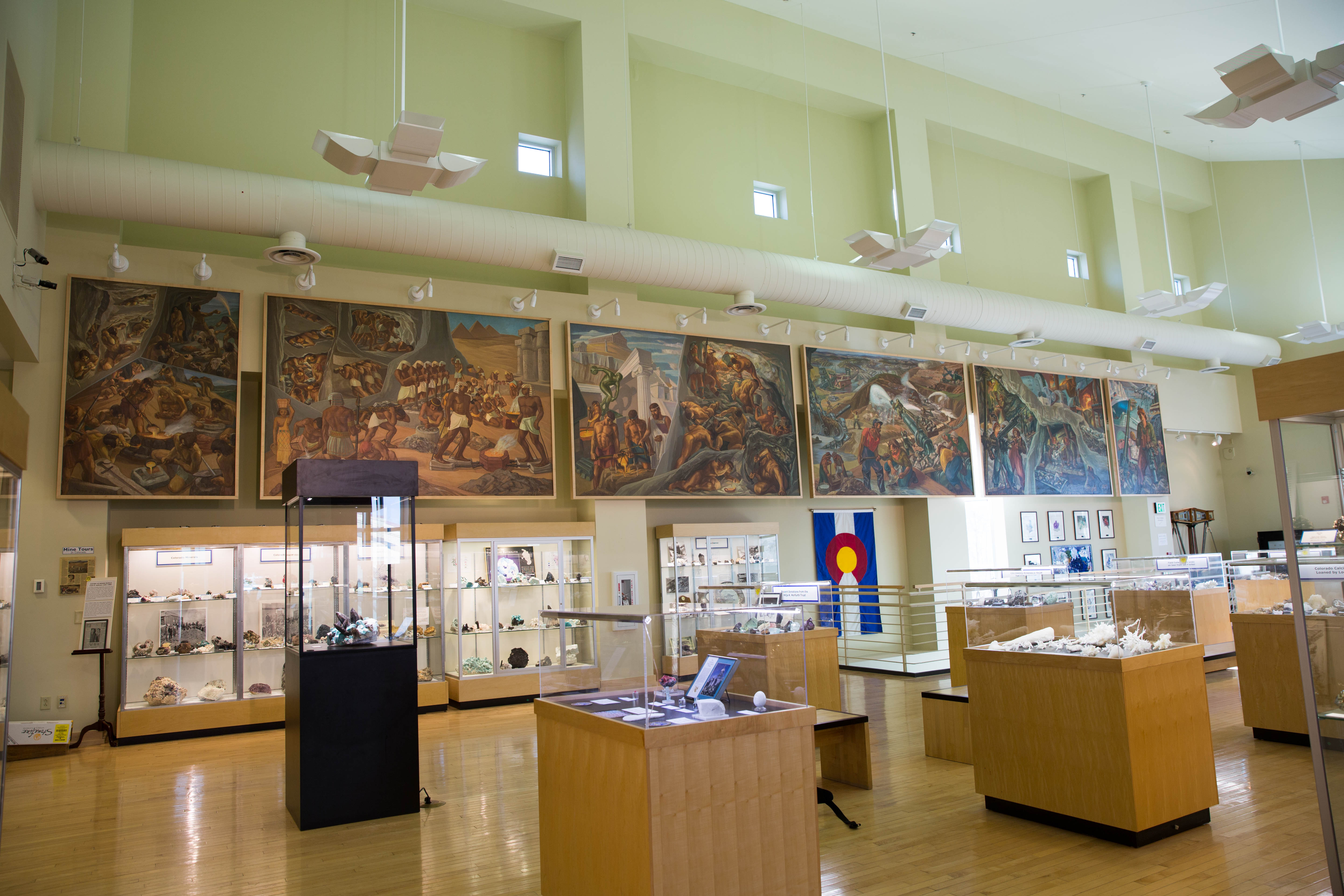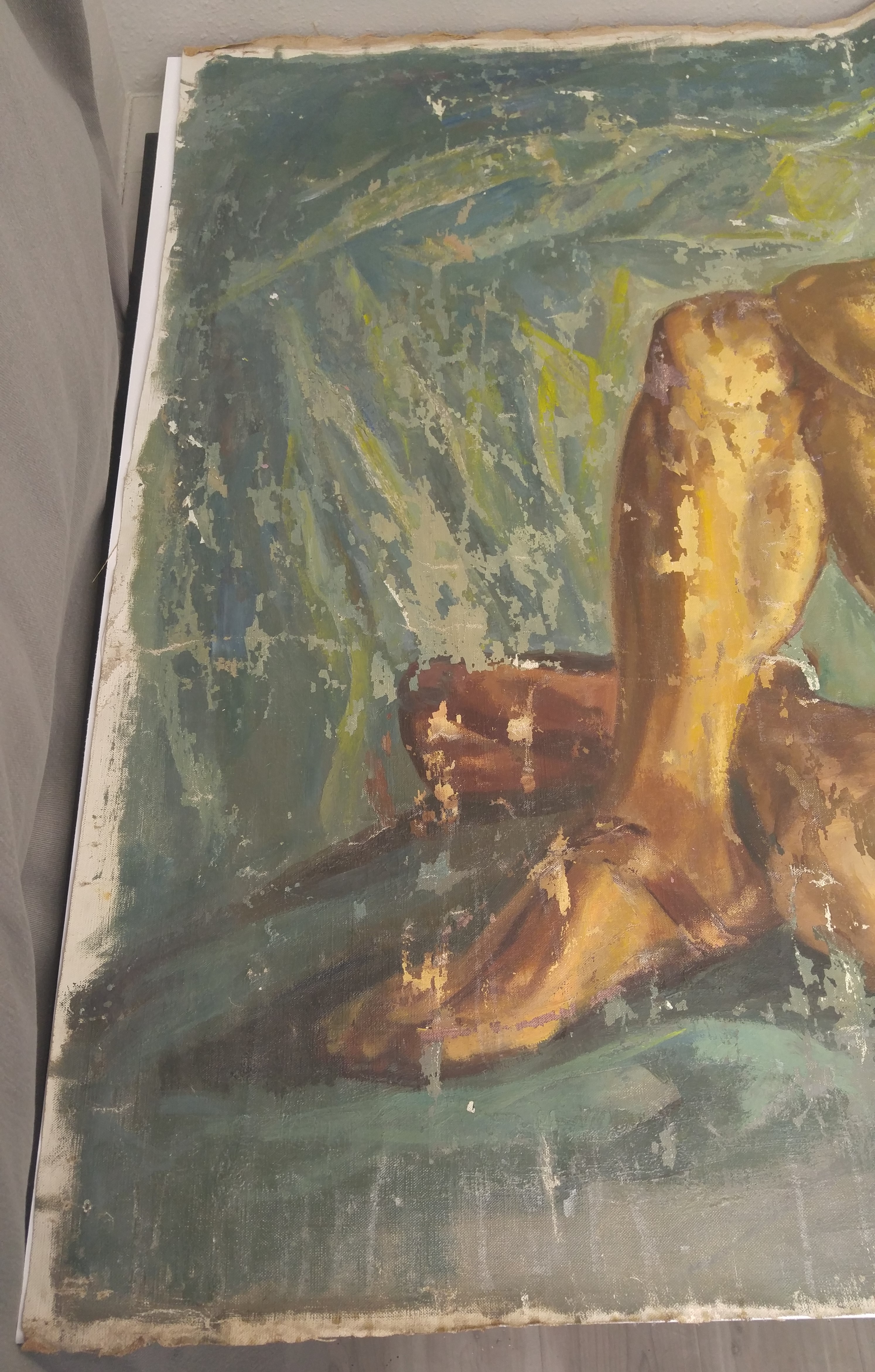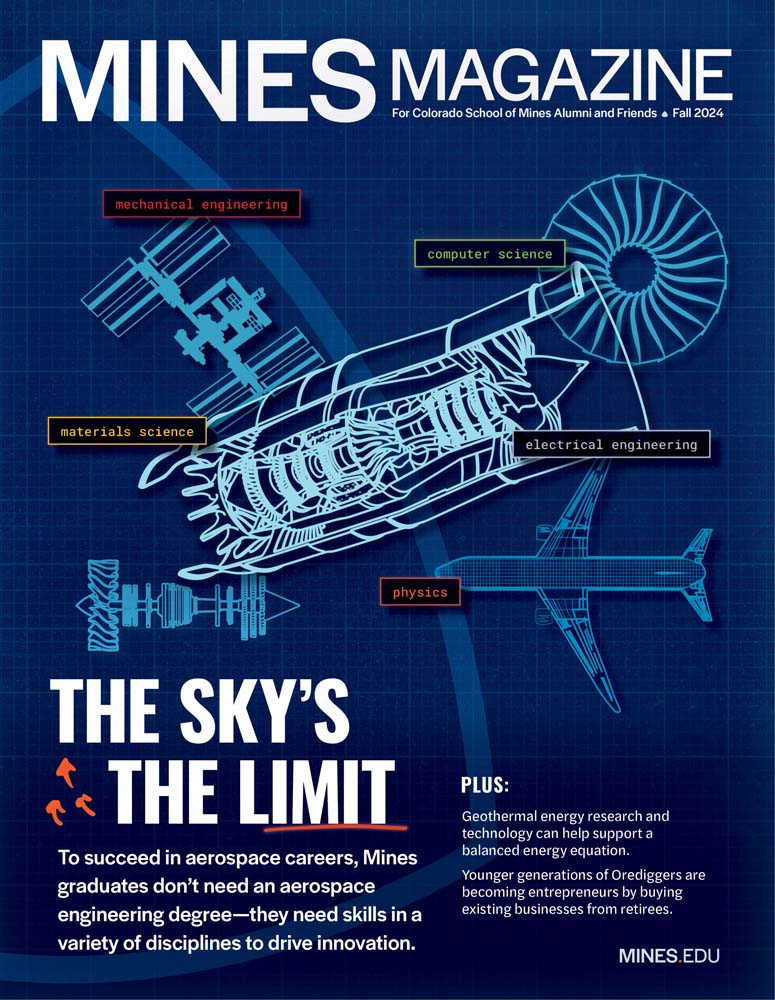Restoring the Hoffman Murals

When the series of murals painted by Irwin D. Hoffman was damaged by a leaking roof in the Mines Geology Museum, Mines called on art conservator Cindy Lawrence to help restore the paintings. Mines Magazine talked to Lawrence about her process and how she was able to preserve Hoffman’s work.
How did you get into art conservation? Why did this field appeal to you?
My mom is an artist, and I grew up making art. I loved studying art history, and I volunteered and worked in social work starting in high school. I first discovered the field by chance, while studying abroad and traveling to visit the Uffizi Gallery, at which time there was a temporary exhibition on the conservation of Botticelli’s Primavera painting. It enthralled me (and still being a relatively new field in the U.S., I had never before heard of such a job, including from my fine art and art history professors).
The field of conservation is so wonderful to me, as it blends my love for fine art, art history and a social good–preservation of cultural heritage (as well as science, which came harder for me but I have grown to enjoy). The aspects of very detail oriented, perfectionistic-type manual work, daily problem-solving, career-long learning, readily seeing the results of your work and being surrounded by beautiful and diverse art, all hold huge appeal for me as well.
I think my artistic temperament was well suited to conservation too: From a young age, I would draw, paint and sculpt tiny, realistic images. In college, I excelled at landscape, portraiture, copying of masterworks, illustration–anything I could see, while suffering miserably in aspects of creativity.
How long have you been in this field?
I started a pre-graduate school apprenticeship over 30 years ago. I feel incredibly blessed that after so many years in the field, I still love my career and consider it a calling.
Do you specialize in or prefer a particular kind of art or artistic movement? What has been your favorite piece to work on and why?
I chose the specialization of conservation of paintings in graduate school. While I continue to treat paintings of diverse media, periods and styles, as my career has progressed, I have become especially know for my work on Spanish colonial paintings, retablos, icons and panel paintings.
As far as favorite pieces, it is extremely difficult to narrow down, as so many of the paintings and projects hold a special significance for me–from stunning images, to important artists and images, rare pieces, technically complex treatments or simply wonderful clients. If I have to say one, it would be the treatment of a Botticelli painting, since that is the artist that introduced me to the field of conservation (and he is one of my favorite Renaissance artists).
How did you come on to the project of restoring the Hoffman mining murals?
Bidding for the treatment of the initial six paintings had been advertised to my field by Mines, and it was my bid that won. I was called by Lisa Kinzel regarding the most recent painting, as soon as it was found in by an employee in Facilities Management.
What are the steps to restoring/conserving these kinds of works?
The initial steps for conservation always involve examination and documentation, including preparation of a treatment proposal and cost estimate. Once work is authorized, further examination and extended testing is carried out to determine the best course of action and specific materials and procedures to use related to the proposed treatment. In the case of the Hoffman paintings (especially the last one) or any artwork where there is imminent potential for further loss or damage of the artwork, stabilization was the next treatment step carried out, involving application of an appropriate, stable adhesive to the areas of lifting and flaking paint and laying down the raised edges of paint using local application of mild heat and pressure or suction. Once the paintings were stabilized, they could be cleaned of dirt, grime and residues and then removal or reduction of discolored/disfiguring surface coatings or improper old repairs was carried out. All of the paintings required some structural treatments, including reducing planar deformations in the canvas (creases, buckles and bulges/indentations), extending the canvas edges and new stretchers (adjustable wooden frameworks over which the canvas is stretched). The paintings then received a new varnish appropriate to their period and style and filling and inpainting of the damages and losses to the image.
Did multiple artists work on this project, or was it just you?
I was the sole conservator working on this project, with occasional assistance from a conservation intern. I enlisted a custom stretcher company to make the new stretchers, a local frame company created and mounted the custom frames (per Mines’ specifications), and I believe Robert Lee, a Mines architect, designed and headed the installation of the paintings in the Geology Museum.
What were the challenges of conserving the paintings? Did you run into any unexpected challenges while completing this project?
Working on-site, as I did on the initial six paintings, always involves more planning and coordinating and less ideal equipment and facilities than working in my studio. And, of course, the size of the paintings necessitated a second pair of hands at many steps during the course of the treatments.
The final painting had some of the most extensive active flaking of paint that I have experienced in my work, and the corresponding paint loss was extensive, as well.
Each painting required approximately 50-100 hours of conservation work.
How do you approach such a project? What kind of research goes into conserving a piece before you start?
After the initial examination and documentation required to prepare a proposal and prior to beginning treatment, I generally research any related history on the artist, period and style in general and on the artwork specifically. I try to identify as much as possible about the provenance/history of its ownership, exhibition, storage and movement and examine in further detail the materials and techniques involved in the painting (including examination under stereo-binocular magnification and using varying lighting types and methods, as well as at times, having samples analyzed by a conservation scientist. I then consult with owners, curators, registrars or other acting caretakers and agents for the artwork to ascertain their goals regarding preservation of and needs related to future demands for the work of art.

Conservation is “actions taken towards the long-term preservation of cultural property”.
The primary goal of conservation professionals, individuals with extensive training and special expertise, is the preservation of cultural property. Cultural property consists of individual objects, structures or aggregate collections. It is material which has significance that may be artistic, historical, scientific, religious or social, and it is an invaluable and irreplaceable legacy that must be preserved for future generations. In striving to achieve this goal, conservation professionals assume certain obligations to the cultural property, to its owners and custodians, to the conservation profession and to society as a whole.
The aim of conservation of a painting is not to merely make artwork look good or to make it look new; it is to preserve the integrity of the original painting and honor the artist’s intent for that piece to as great a degree as possible, accepting some of the aging processes.
Professional conservators are trained through a rigorous program of undergraduate requirements, pre and post graduate school internships, completion of a recognized graduate program, and ongoing mentorship with senior professionals.
For more about Hoffman’s murals, read the story here or visit the Mines Geology Museum to view the murals in person and learn more about Colorado’s mining and mineral history. Go to mines.edu/geology-museum for visiting hours.
Some of Hoffman’s smaller paintings and sculptures can be viewed in the Arthur Lakes Library.






